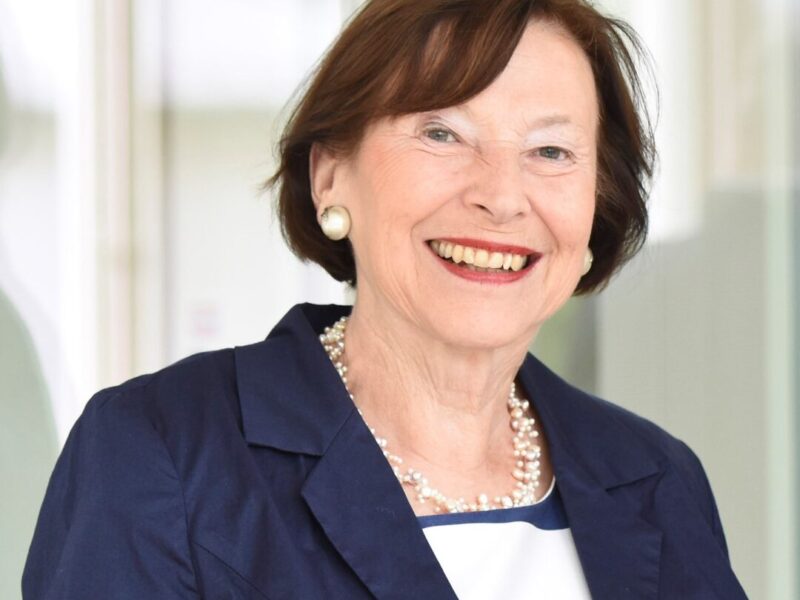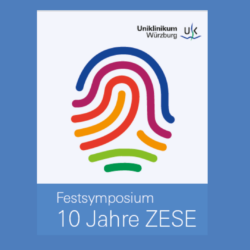In ihrem Grußwort beim Tagesspiegel-Patienten-Dialogforum: „Wege aus der Diagnose-Odyssee bei Seltenen Erkrankungen“ am 29. Juni 2022 unterstrich Eva Luise Köhler die große Bedeutung einer zügigen Diagnosestellung für Patientinnen und Patienten mit Seltenen Erkrankungen: „Selbst wenn noch keine guten Therapien existieren, kann die Benennung des Leidens etwas Ruhe einkehren lassen und gibt Orientierung für den weiteren Weg.“ Auch für die behandelnden Ärztinnen und Ärzte sei die Diagnosestellung entscheidend, denn solange eine Krankheit nicht erkannt wird, lasse sich auch keine gezielte Therapie finden, betonte sie.
Leider durchliefen jedoch noch immer zu viele Betroffene die im Titel der Veranstaltung aufgegriffene sprichwörtliche Odyssee: Bei Kindern dauert es im Mittel viereinhalb, bei Erwachsenen acht lange Jahre bis zur Diagnosefindung, es werden durchschnittlich acht Ärzt:innen aufgesucht und beinahe jeder zweite Patient, jede zweite Patientin erhält mindestens eine Fehldiagnose, erläuterte Eva Luise Köhler. „Was das an persönlichem Leid in den Familien und zudem an Zeit, Aufwand und Kosten bedeutet, kann man nur erahnen.“
Seltene Erkrankungen: Digitalisierung ist essenziell für die notwendige Präzisionsmedizin
Hoffnung mache den allein in Deutschland mindestens vier, eher fünf Millionen von Seltenen Erkrankungen betroffenen Menschen der enorme Erkenntnisgewinn in der Medizin und ganz entscheidend auch die Entwicklung der Digitalisierung. „Die Digitalisierung wird für uns alle ein neues Zeitalter der Medizin einläuten, aber niemand wird mehr davon profitieren als Menschen mit Seltenen Erkrankungen“, unterstrich Köhler. Für die in diesem Bereich notwendige Präzisionsmedizin sei essentiell und geradezu lebensnotwendig, dass vorhandene Forschungs- und Behandlungsdaten insbesondere in der Universitätsmedizin zusammengeführt werden. Projekte wie CORD-MI (Collaboration on Rare Diseases), die dies im Rahmen der vom Bundesministerium für Bildung und Forschung (BMBF) geförderten Medizininformatik-Initiative bundesweit vorantreiben, seien deshalb von überragender Bedeutung.
CORD-MI: Wege für Weiterförderung in der Medizininformatik-Initiative müssen gefunden werden
Entsprechend erschüttert zeigte sich Eva Luise Köhler von der aktuellen Entscheidung, CORD-MI in der zweiten Förderperiode der Medizininformatik-Initiative des BMBF nicht zu berücksichtigen. Dass die Belange der Patientinnen und Patienten keine Priorität haben und sich offensichtlich in einem Wettbewerb mit den Volkskrankheiten hintenanstellen müssen, entspräche genau den Erfahrungen, die die Betroffenen selbst immer wieder machen müssen. Sie stellte klar: Wenn wichtige Maßnahmen zur Digitalisierung und Vernetzung von Datenbeständen auf halbem Wege stehen bleiben, sind Bedarfsanalysen, wie die just an diesem Tag veröffentlichte Stellungsnahmen der NAMSE-Steuerungsgruppe zu den Bedarfen an Digitalisierung für den Bereich Seltener Erkrankungen das Papier, auf dem sie stehen, nicht wert. Eva Luise Köhler forderte entschieden, dass Wege der Finanzierung in der Medizininformatik-Initiative gefunden werden müssen, die eine Weiterförderung auch der Anwendungen im Bereich der Seltenen Erkrankungen ermöglichen, denn: „Selten darf nicht gleichgesetzt werden mit unbedeutend!“
TRANSLATE-NAMSE: Beleg für die Wirksamkeit interdisziplinärer und standortübergreifender Zusammenarbeit
Eva Luise Köhler verwies auf das Innovationsfonds-Projekt TRANSLATE-NAMSE, das die Wirksamkeit interdisziplinärer und standortübergreifender Zusammenarbeit zuletzt vorbildlich belegt hat. 14 Konsortialpartner angeführt von der Charité haben darin durch Umsetzung von ausgewählten Maßnahmen aus dem Nationalen Aktionsplan für Menschen mit Seltenen Erkrankungen gerade im Bereich der Diagnosestellung beeindruckend deutliche Verbesserungen erreicht: Bei gut jedem dritten der im Projekt betreuten Patient:innen konnte dank der Einführung strukturierter Behandlungspfade mit interdisziplinären, standortübergreifenden Fallkonferenzen, dem Einsatz von Lotsen sowie innovativer, genetischer Diagnostik eine gesicherte Diagnose gestellt werden – und das im Schnitt innerhalb eines halben Jahres.
„Rund 1700 Kinder, Jugendliche und Erwachsene, deren Freunde und Familien wissen nun, woran sie sind. Welch großartiger Erfolg!“, zeigte sich Eva Luise Köhler beeindruckt und appellierte abschließend: „Lassen Sie uns diesen Erfolg zum Vorbild nehmen, um Menschen mit Seltenen Erkrankungen nicht zurückzulassen!“
Hier sehen Sie die ganze Veranstaltung.



